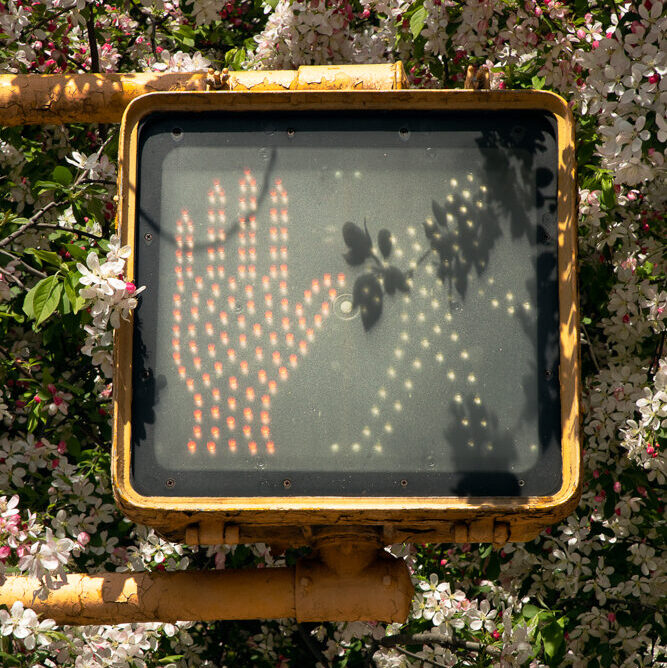Isolating from Isolation: How Commune Inhabitants Aren’t the Recluses We Think They Are (Kinda)

Shaking Hands. Credit: Ari Adams
This year has forced us all into isolation, and while it has not been the same for everyone, there are a lot of feelings we’ve universally shared. This shared separation has brought about a certain intimacy, ironically. Though by now most of us are itching to escape it, for others it has been their way of life for decades, and it likely will be for decades to come.
Communes, more recently recognized as intentional communities, for decades have served as a way for people to escape mainstream society to where they–for the most part–can live by their own rules and find more simple lives and better human connection. Researcher Bill Metcalf writes in his study Utopian Struggle: Preconceptions and Realities of Intentional Communities, that the earliest commune was “probably Homakoeion, developed by Pythagoras in about 525 BCE in what is now southern Italy.” Although many have strayed (for the worse) from the initial motivation, the root of it has largely stayed the same: people of like minded values and goals coming together to create “an ideal society” that is all very… together.
The Foundation for Intentional Community, whose mission is to “support and promote the development of intentional communities as pathways towards a more cooperative, sustainable and just world,” estimates that in the United States alone, there are over 3,500 intentional communities. Not defunct communes started by idealistic hippies in the sixties and seventies, not Jonestown, but active communities, where people of all ages live and work.
Ganas, an intentional community started in 1979 in New York City’s Staten Island (who would have thought?) states their purpose as “to bring reason and emotion together in daily problem solving, in order to create our world, with love, the way we want it to be.” Decisions and arguments are worked through collaboratively, and their communal approach to resources and discussing feelings and feedback allows them to better embrace diversity.
Their core group, which consists of nine people, “pool all their time, talents, and material things.” There are second and third groups of twenty-five and thirty-five members, respectively, who still live in and share Ganas’ philosophies and most times participate in decision making.
If that’s not intertwined enough for you, or the alternative society you’re seeking is an escape of urban life too, there is the East Wind Community in the Missouri Ozarks, an income-sharing, egalitarian community where all inhabitants “hold our land, labor, and resources in common.” Founded in 1974, they set their own rules, “actively engage in self-governance” and are guided by a rotating five member board as well as their “Legispol” which in over one hundred pages “lays out in detail the methods and processes we use to make decisions.”
East Wind is a founding member of the Federation of Egalitarian Communities. They believe that through the intricate collaboration and sharing of their… everything (childcare, housekeeping, agriculture work, food production, etc.) they will fulfill “the promise of realizing the human potential lost through unequal distribution of wealth, power, and opportunity.” Each member must meet a labor quota of at least thirty-five hours a week.

A Box of Vegetables. Credit: Ari Adams
Though the founding of the United States was rooted in a lot of things, the motivations are not unlike those seeking to live in communes. In the sugar-coated and white-washed version of highschool history books, the United States was founded through the seeking of an alternative way of living when colonizers weren’t satisfied with the prescribed way of life in the Old World. They wanted a greater say in how society was run, and so they created their own. It’s an idea many before and since have felt the need for, to abandon mainstream society and take control of their routine. Since the 20th century, it has often been out of a need to opt out of a capitalist society that they’re tired of competing with.
Still, the United States hasn’t always had the best relationship with anti-establishment values. They have either harbored them (remember the insurrection? The Civil War?) or totally rejected them, as seen in Seattle’s Capitol Hill Occupied Protest in June of 2020 and the Community for Creative Non-Violence’s “Reaganville” in Washington D.C. back in 1982. The intentions of these examples are absolutely not parallel to each other and should not be compared, but they highlight that society tends to be dubious of people and groups with values of societal rejection.
Ideals driven by a need of escape because of a total disdain for the way things have gone or are set to be done have certainly failed, and some have established a dangerous precedent through history. It seems selfish, it has been selfish, “what do they really need to so badly escape from?” we think, “what are they running away from?” “Escaping” has tended to be either manipulative and anti-democratic or extremely privileged. The ongoing pandemic has inevitably created an impossible to ignore living PowerPoint presentation titled 1,000 Examples of Wealth Inequality. With the rich flaunting the art of escape with their trips to Tulúm and house hopping between their secondary and tertiary houses, where does that leave “escaping” to intentional communities?
For example, earlier this year, TikTok user @michellerusk_ uploaded a since viral and highly criticized video montage of her life in a “conscious community” in the mountains of Guatemala. She goes on to show a slew of white millennials and lists everything they do together. “We work together, play together, sing together, create together, and hangout together,” she says. But then, a break of the alliteration: “where we get fed healthy meals” she continues, as we see the first non-white person to appear in the video handing someone a plate of food. While per the Tribal Village’s website they are “running fundraising campaigns to ‘aquire’ (yes, spelled incorrectly) new land around the lake and build accommodations” for more people, Adam Isacson, who runs The Washington Office on Latin America’s Defense Oversight Program, reminds us in a March 21st tweet that “In February, the U.S. Border Patrol apprehended 18,904 people fleeing their native #Guatemala because they couldn’t live there anymore.”

Pulling a Tractor. Credit: Ari Adams
Between the haunting stories of Jonestown and the example of Tribal Village, it’s hard to find a space to shed a positive light on communes. Still, especially today, it’s also hard to pretend there’s nothing we wouldn’t escape in this globally warmed, socially unfair, capitalist country, and some people have found an alternative that works, at least for them. Rachel Fee, who has lived in North Carolina’s “ecohaven” Earthaven since 2017, told Mike Mariani of T Magazine that, “This is not an idealistic situation. It’s not running away from the world and sticking our head in the sand — it’s reinventing the wheel.”
For many inhabitants of intentional communities, it’s the mainstream society that they are “escaping” that has made them feel isolated and lonely already. Though technology has us more connected than ever before, we’re also increasingly separated. Society isn’t societal enough anymore, it’s too massive, too individualistic. In “isolating” themselves from society, they seek a society of big, tight-knit fish in a small pond, instead of a big pond where tiny fish are, well, too distanced. The smaller the society, the stronger and more collaborative the community is, and the less isolated you feel. They’re “isolating” to find the very opposite, intimacy. Through isolation, a “coming together.”




